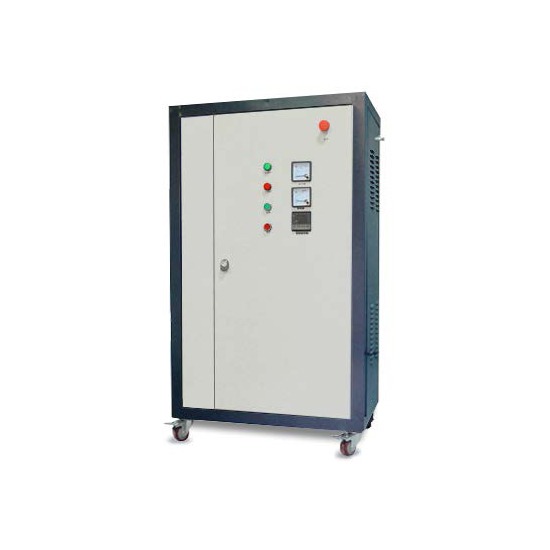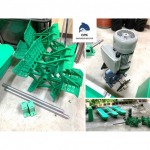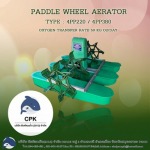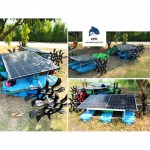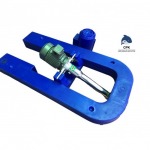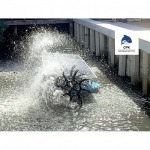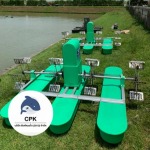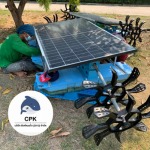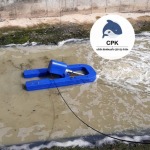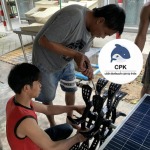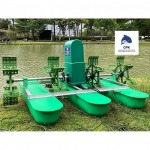Online Catalog
Standard Features
- High purity corona discharge ozone generator tube, stable ozone output with long service life and capacity range of 5-500 g/hr
- Use anti-oxidation and corrosion-resistant materials (Teflon tube, components made of stainless steel material)
- Built-in Oxygen Concentrator with Stable oxygen output and flow rate range of 3-100 LPM
- Built-in Ozone microbubble mixing pump, Allows a higher amount of ozone to be dissolved into the water flow using smaller pumps.
- Steel box and wheels and movable for various applications
- Control system: Voltmeter, Ampmeter, Timer, Switch, Start, Stop, Emergency stop, Working LED, Power LED
- Factory tested for insured quality
- 2 Year Warranty
What is Ozone?
Ozone is a naturally occurring gas molecule consisting of three oxygen atoms (O3). Sometimes called tri-atomic oxygen or “activated” oxygen, ozone is a highly reactive oxidizer. Nature produces ozone through lightning storms and chemical reactions in the upper atmosphere. Ozone has a number of beneficial properties: in the atmosphere, it helps block excessive solar UV radiation from reaching Earth (that’s why there is such concern about the hole in the ozone layer) it oxidizes microorganisms in both air and water; it removes odors in air and water; and it removes off-tastes in water. Ozone reacts very quickly with other chemical compounds around it, and when it does, its by-product is oxygen (O2).
How Ozone is generated?
There are two common methods to generate ozone:
1. Corona Discharge (CD) Design
2. Ultravlolet (UV) Light Design
Corona discharge generators are much more sophisticated than UV and have the capability to generate much higher levels of ozone. Ozone is produced by passing a stream of dry air or oxygen through a high voltage field called a corona discharge, where oxygen (O2 ) in the stream is converted to ozone (O3 ). Ozone is generated at the point of application.
UV ozone generators use a light source that generates a narrow-band of ultraviolet light. Standard UV ozone generators are less expensive and produce ozone with a concentration of about 0.5% or lower. UV also requires the air (oxygen) to be exposed to the UV source for a longer amount of time, and any gas that is not exposed to the UV source will not be treated. This makes UV generators impractical for use in situations that deal with rapidly moving air or water streams.
Ozone generators are manufactured in various sizes, each of which is dependent on the quality and quantity of the water to be treated. The smaller the application, the smaller the ozone generator. The larger the application, the larger the generator needed.
What are the benefits of using Ozone?
- Most powerful oxidizer : Ozone can literally oxidize material in water 3,200 times faster than chlorine and 5,600 times faster than bromine.
- Disinfection : Bacterial disinfection, and the inactivation of viruses and cysts.
- Oxidation of Inorganics : Precipitates iron, manganese, sulfides, nitrites and organically bound heavy metals.
- Oxidation of Organics : Including organics causing color, taste and odor problems, some detergents and pesticides, phenols,
- VOCs, turbidity control and micro flocculation of soluble organics.
- Safety : environmental friendly alternative to chemicals.
Ozone vs UV ?
|
Systems:
- All-in-one structure. All feed gas treatment devices are installed inside: Refrigerant air dryer, oil free air compressor, condenser, PSA oxygen generation system, ozone tubes with special power supply and other accessories are installed in one cabinet.
- High purity corona discharge ozone generator tube, stable ozone output with long service life.
- Use anti-oxidation and corrosion-resistant materials (Teflon tube, components made of stainless steel material)
- Built-in Oxygen concentrator
- Steel box and wheels and movable for various applications
- Control system: Voltmeter, Ampmeter, Timer, Switch, Start, Stop, Emergency stop, Working LED, Power LED
Built-in Oxygen Concentrator :
|
|
Built-in Ozone Generator Tube:
|
|
Built-in Ozone microbubble mixing pump:
|
Specification
Please request for more details or contact our customer service for more information.
